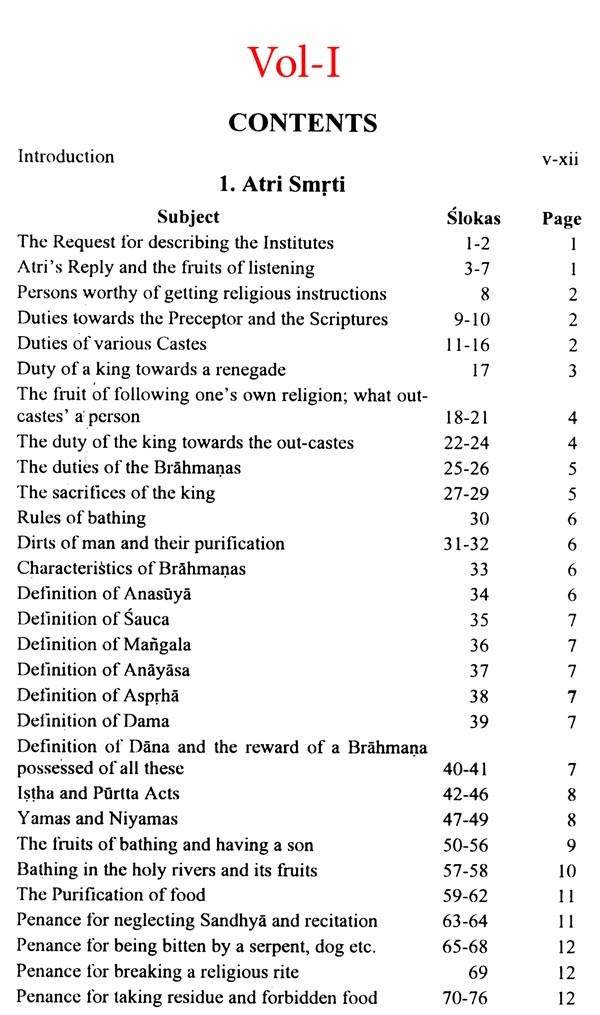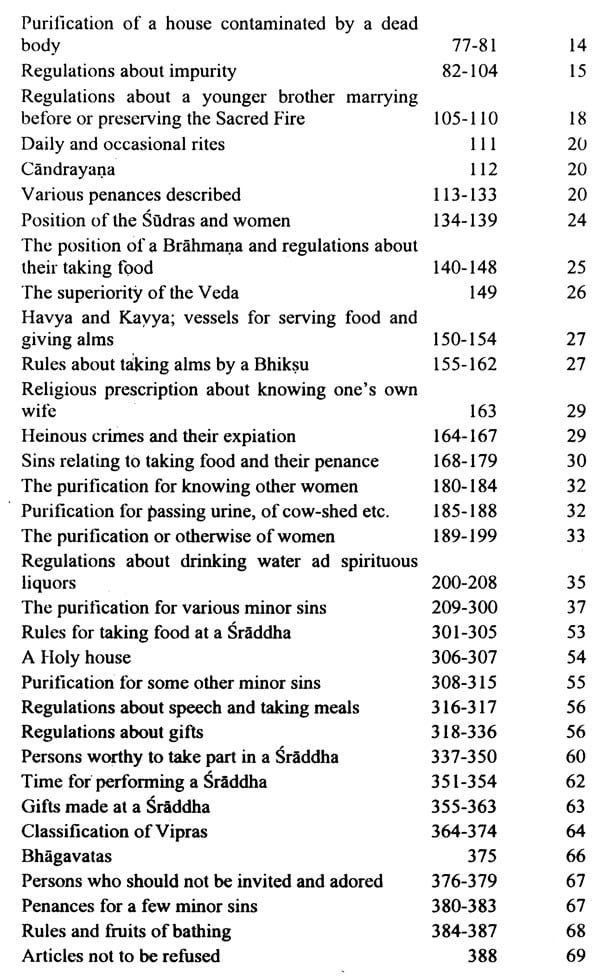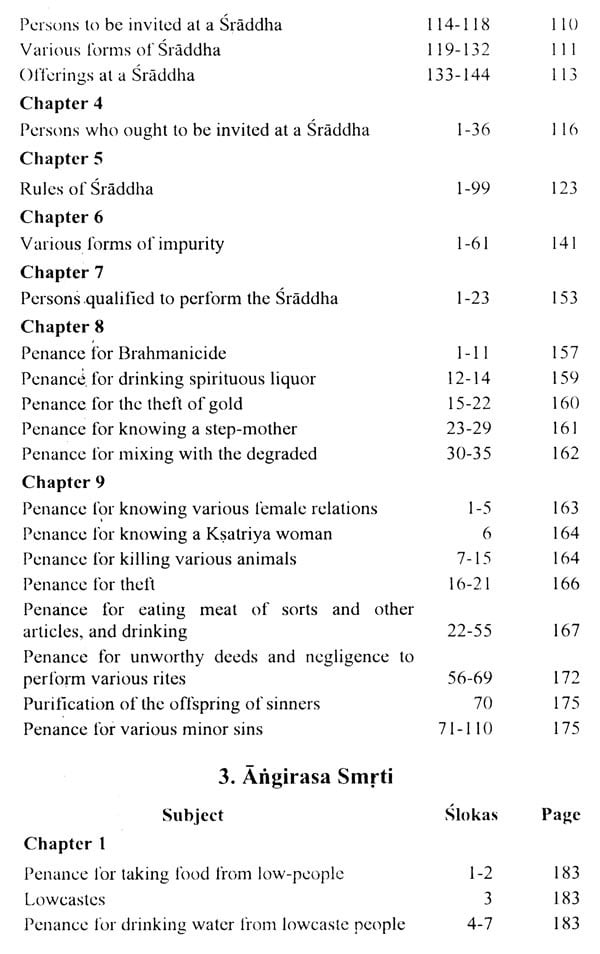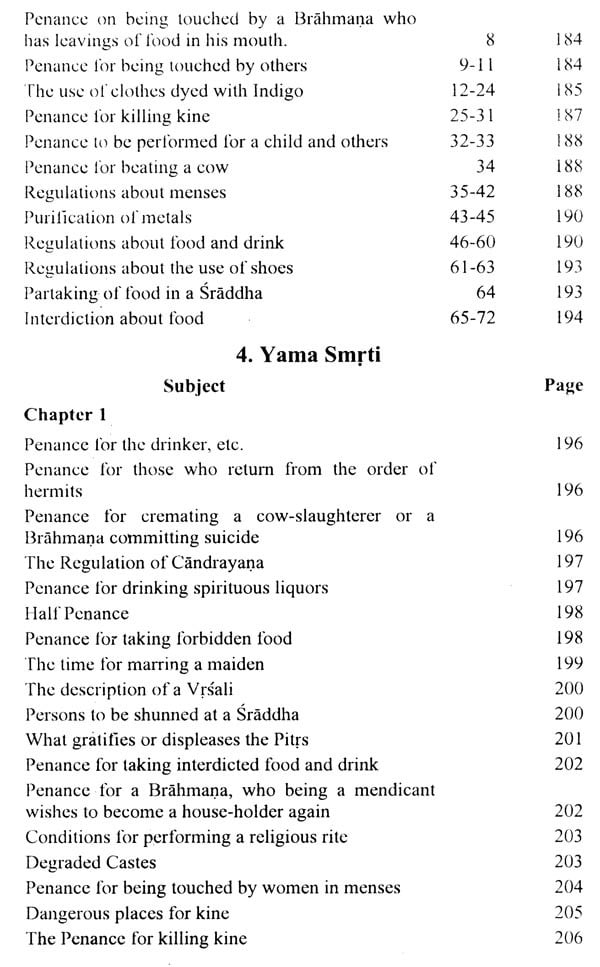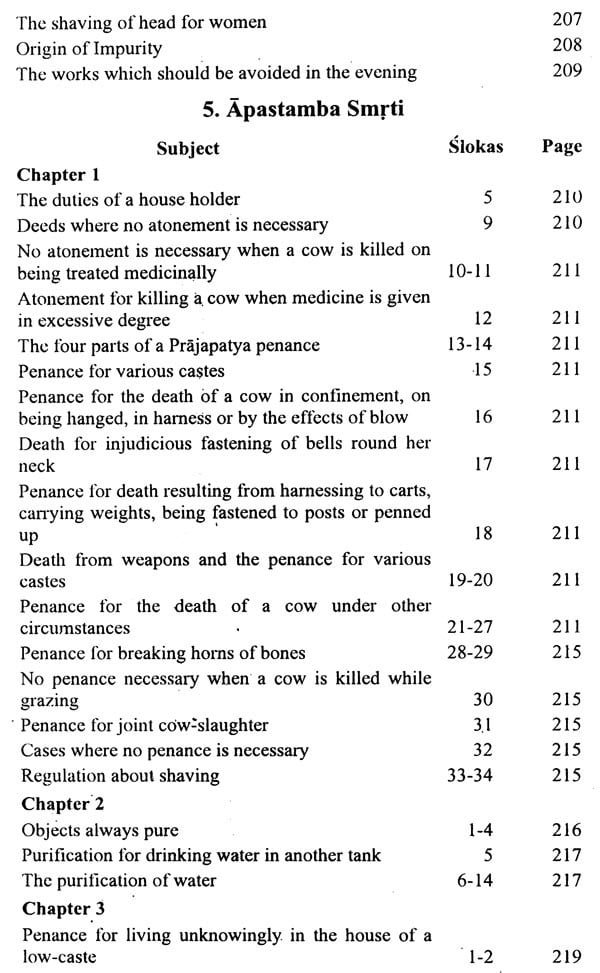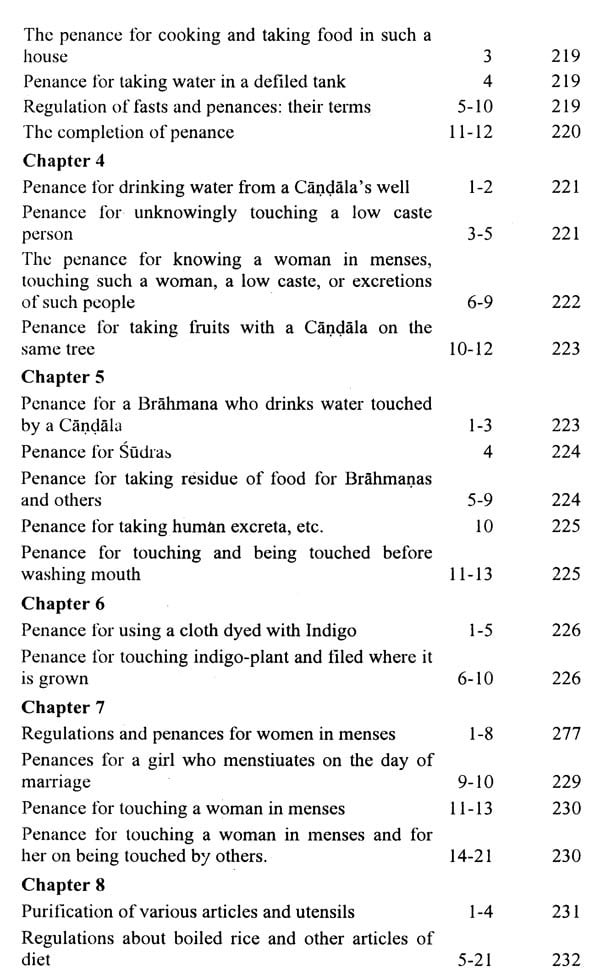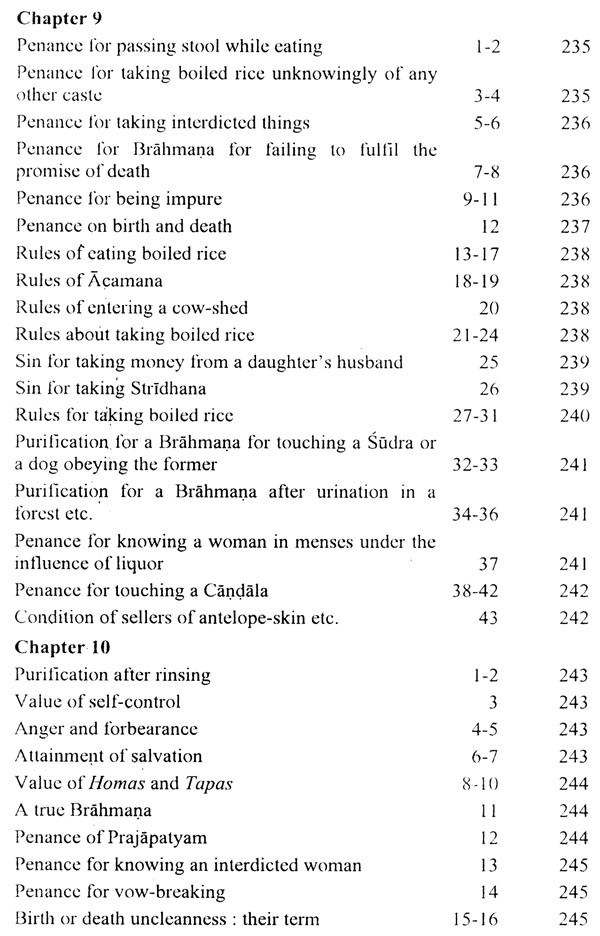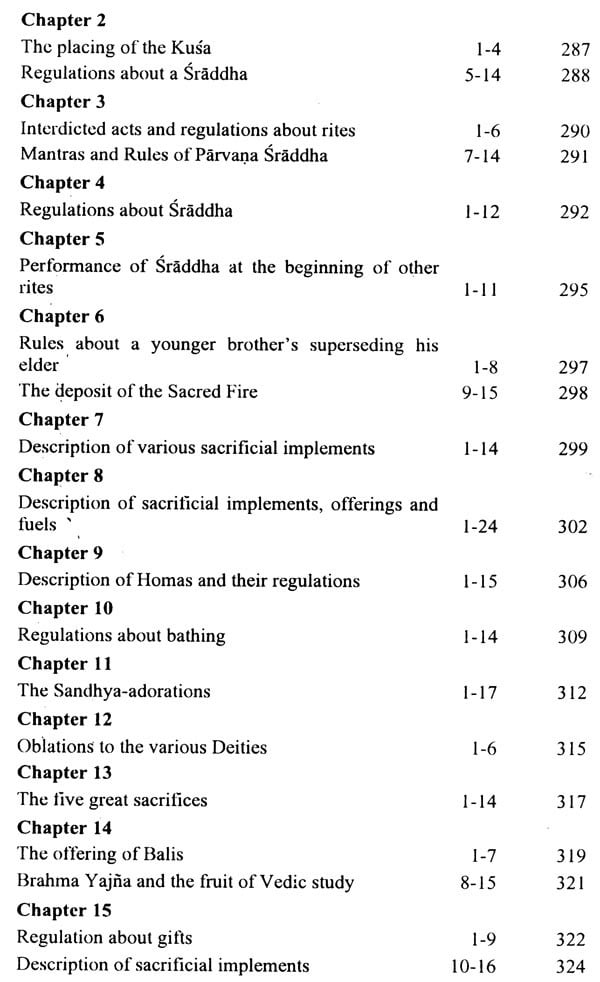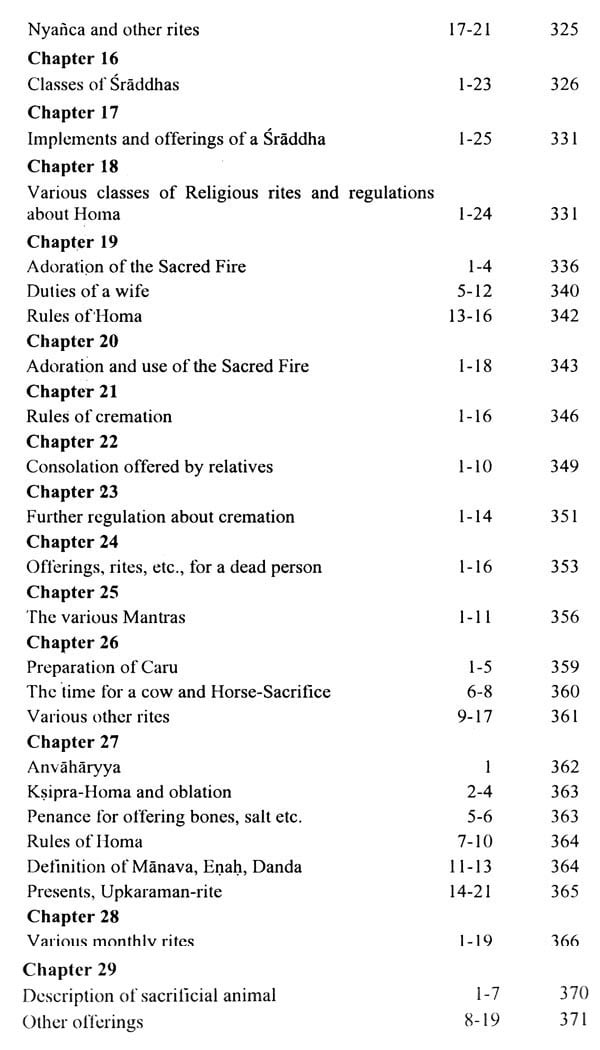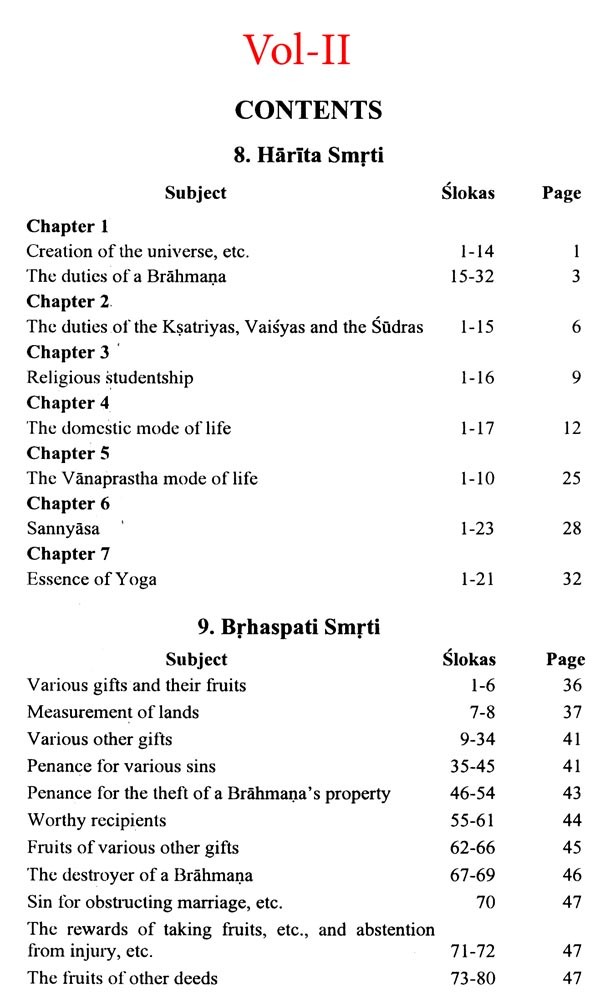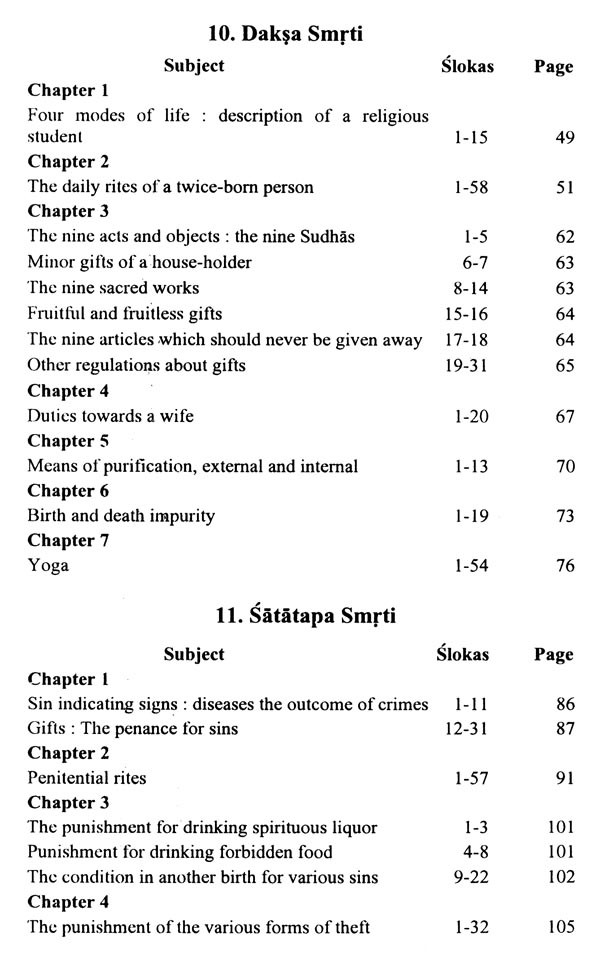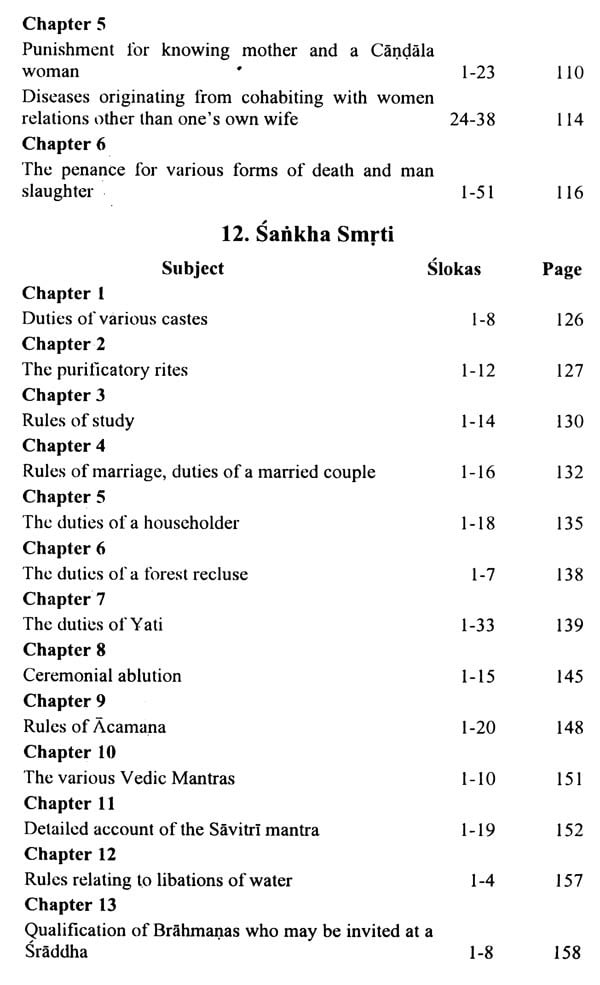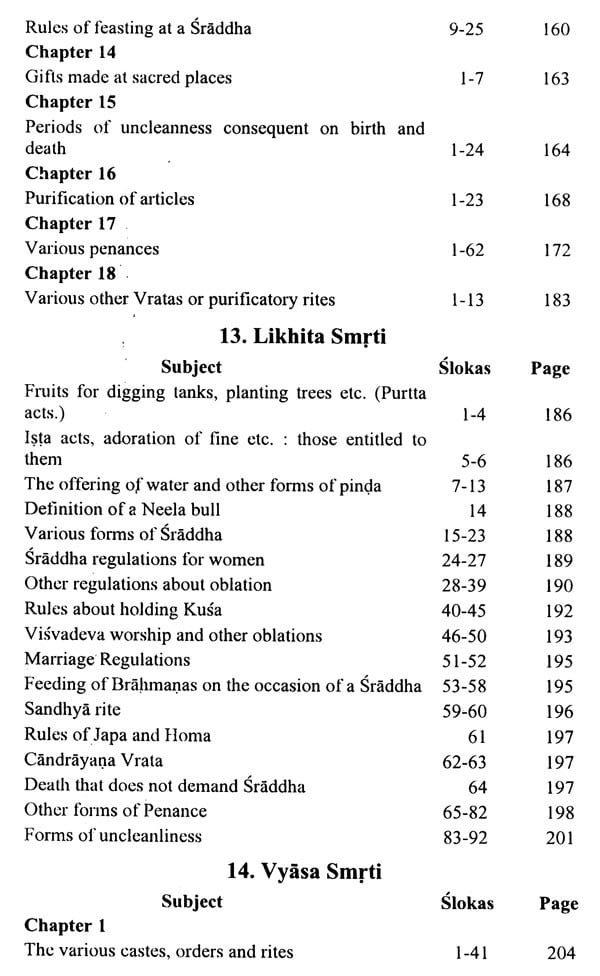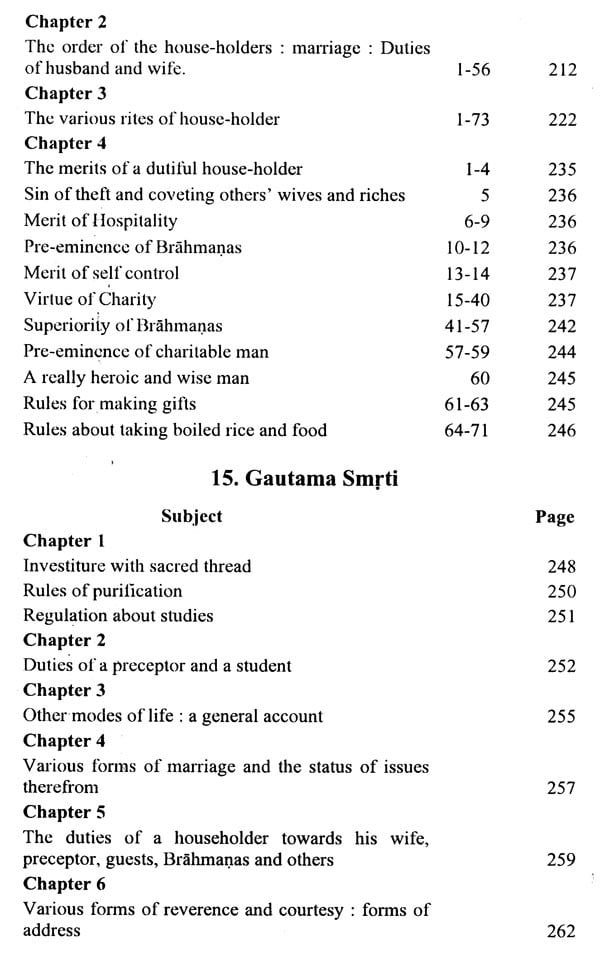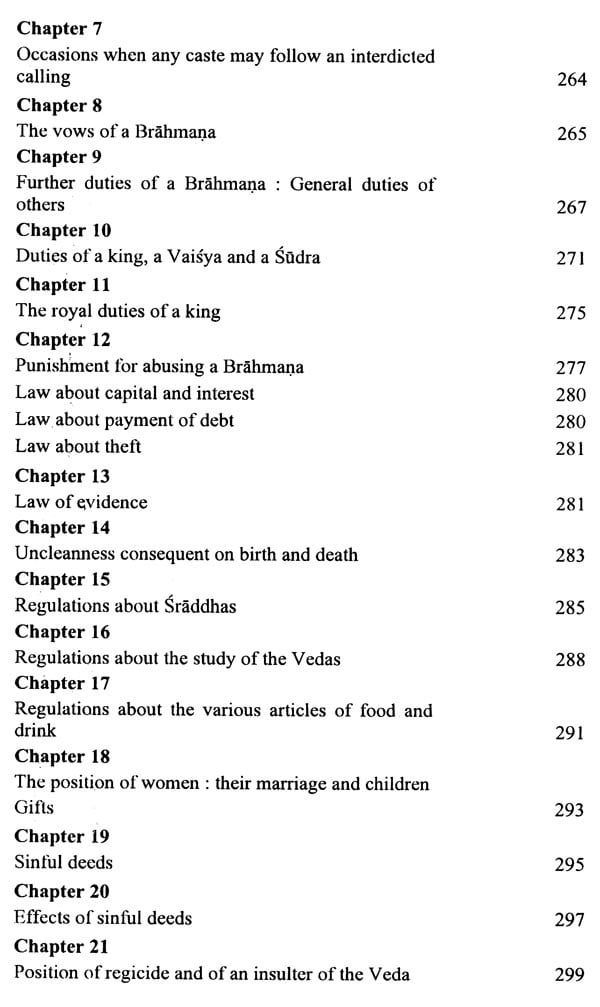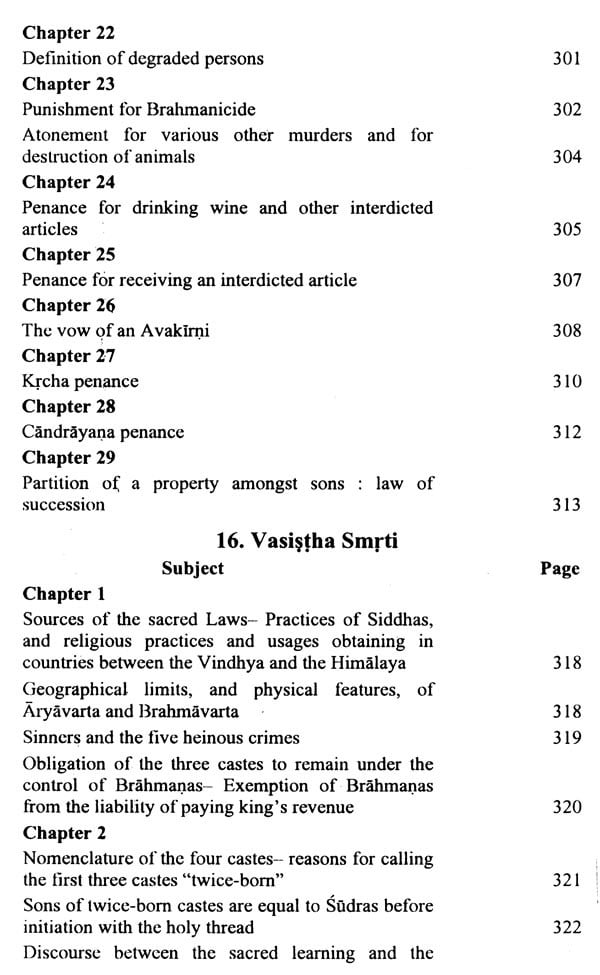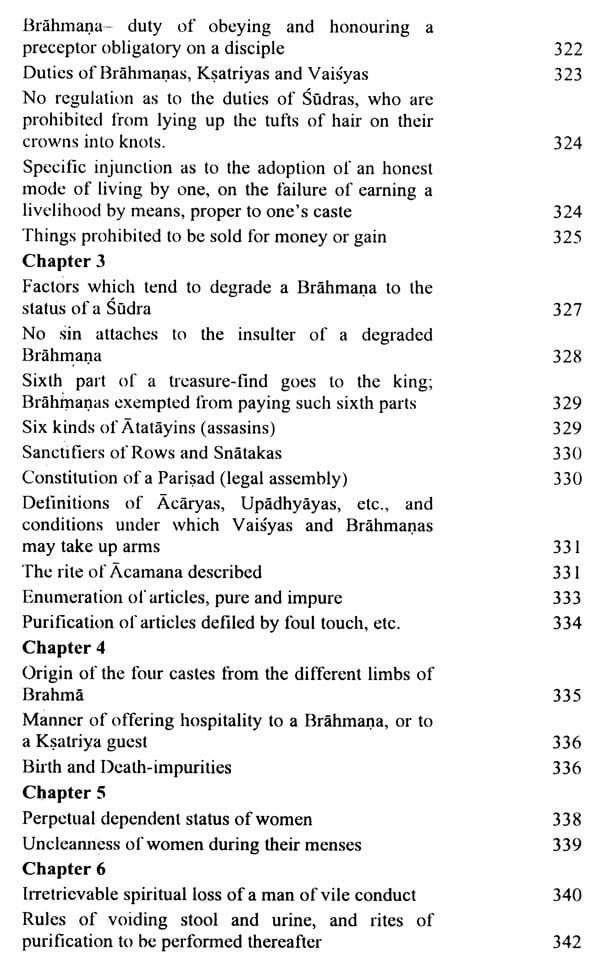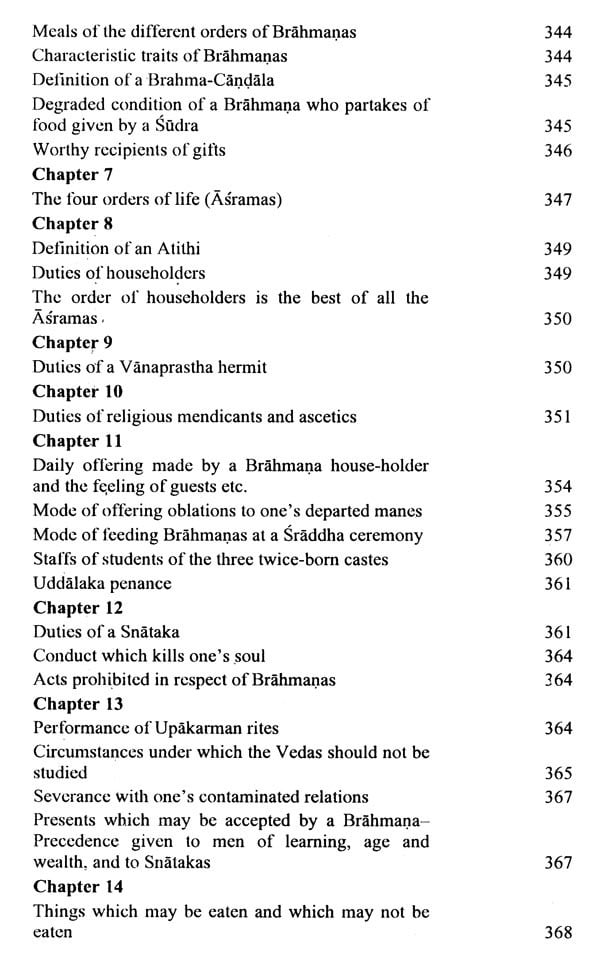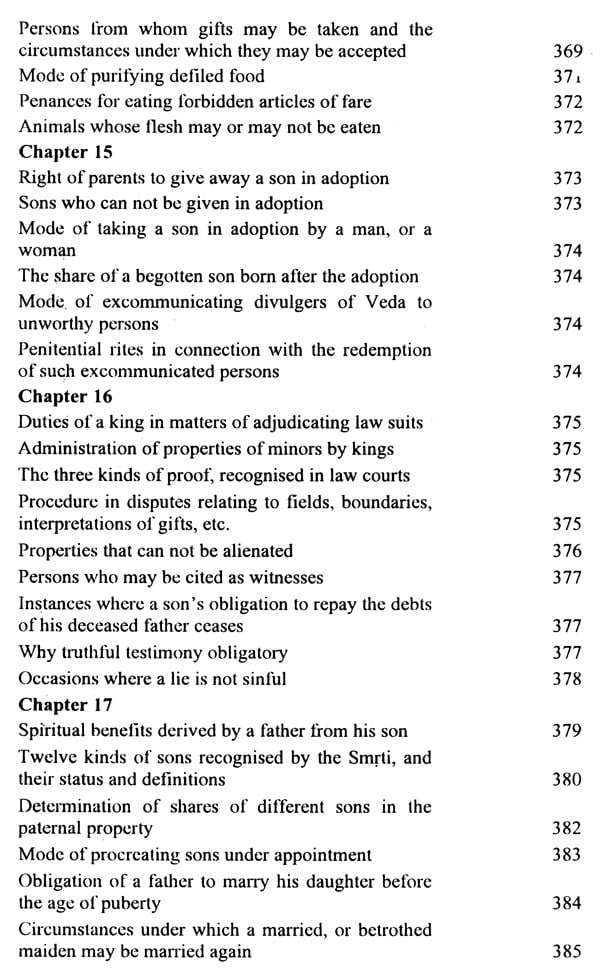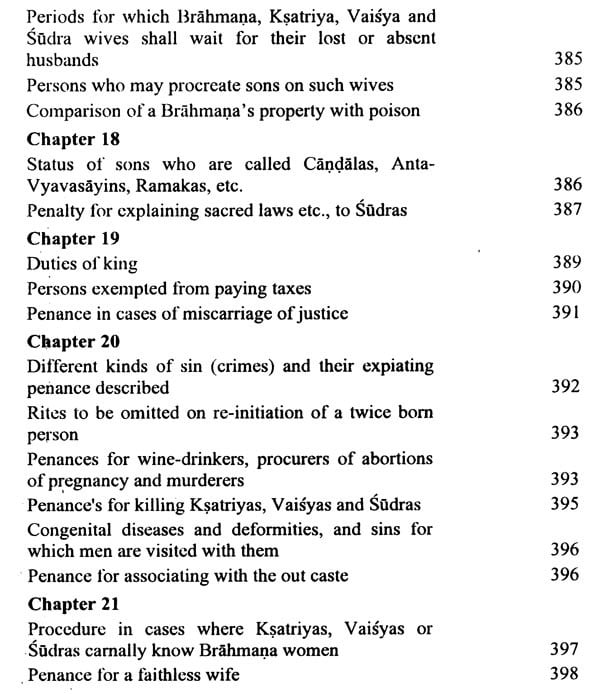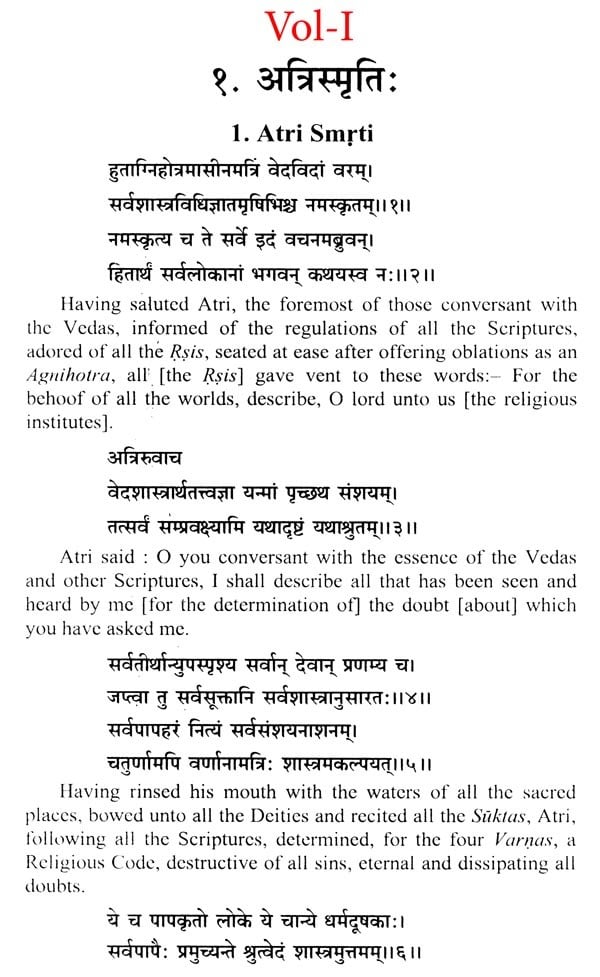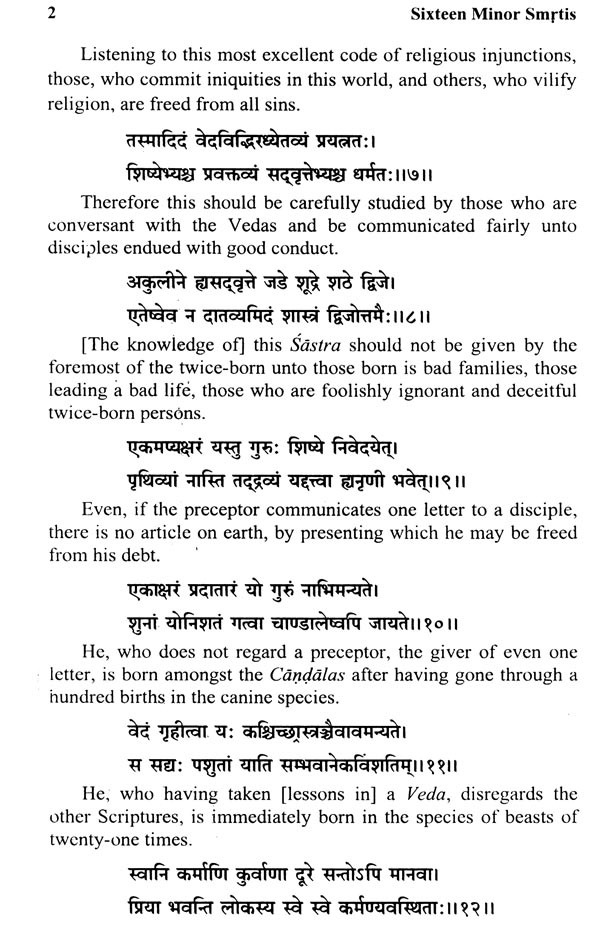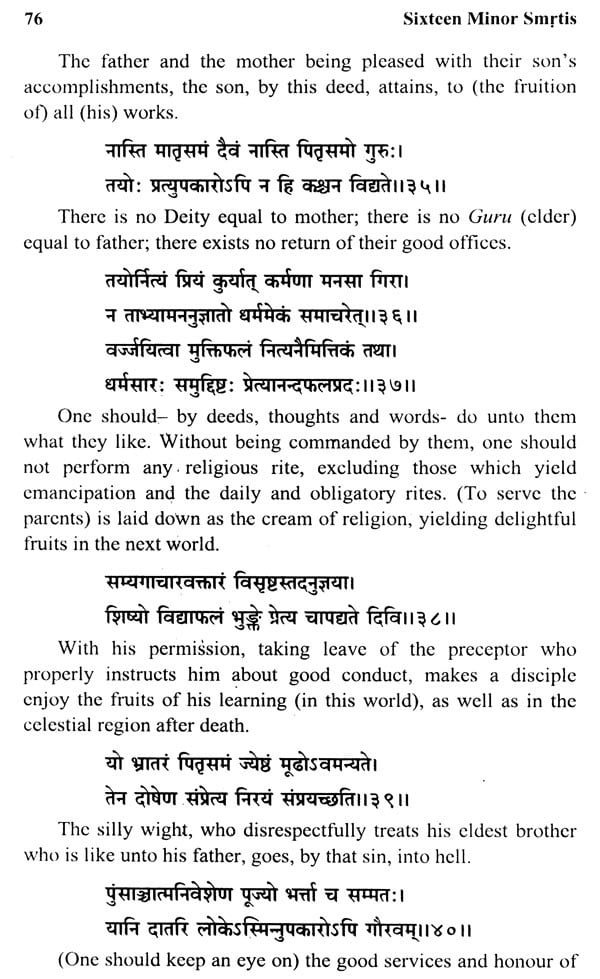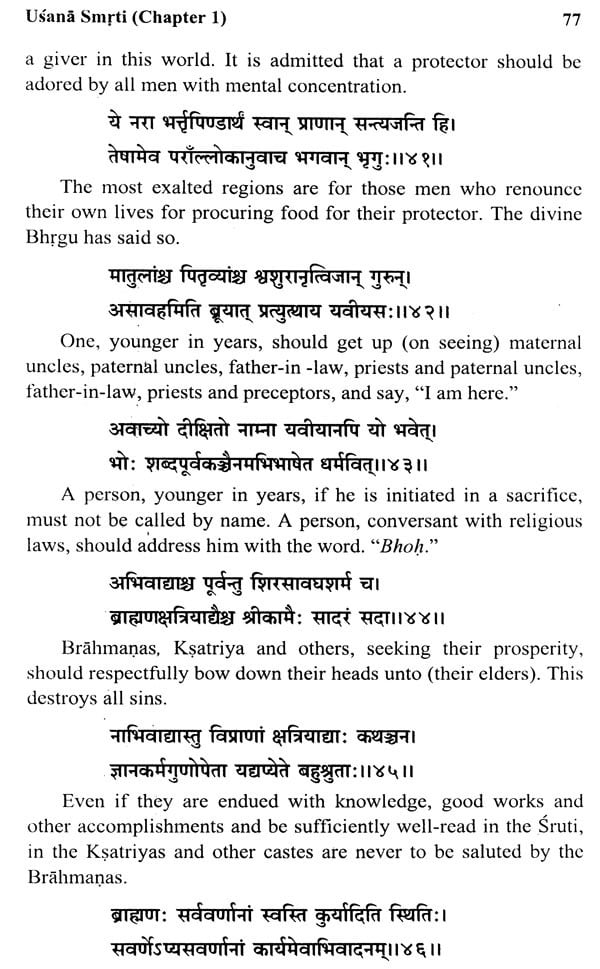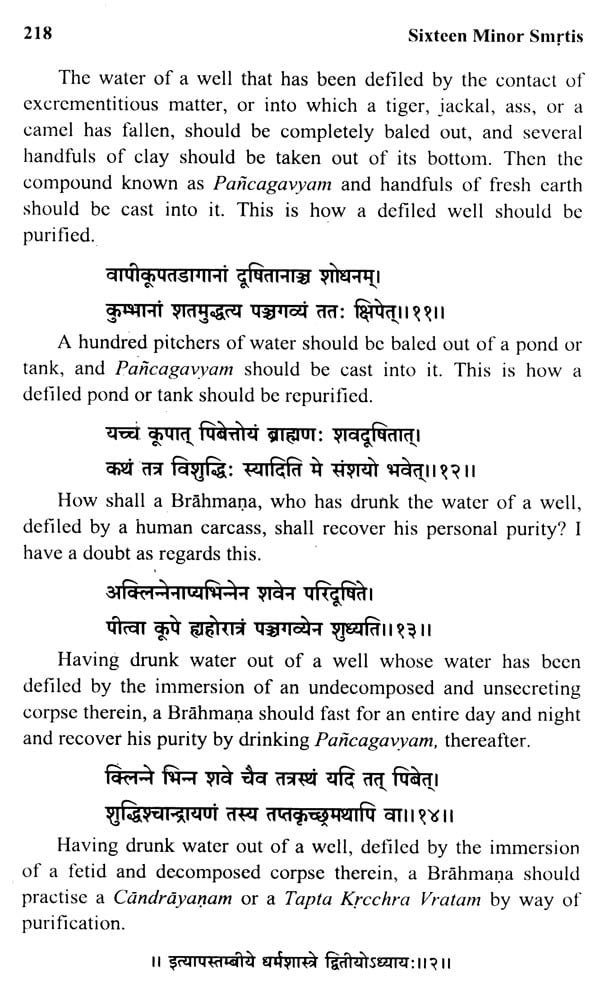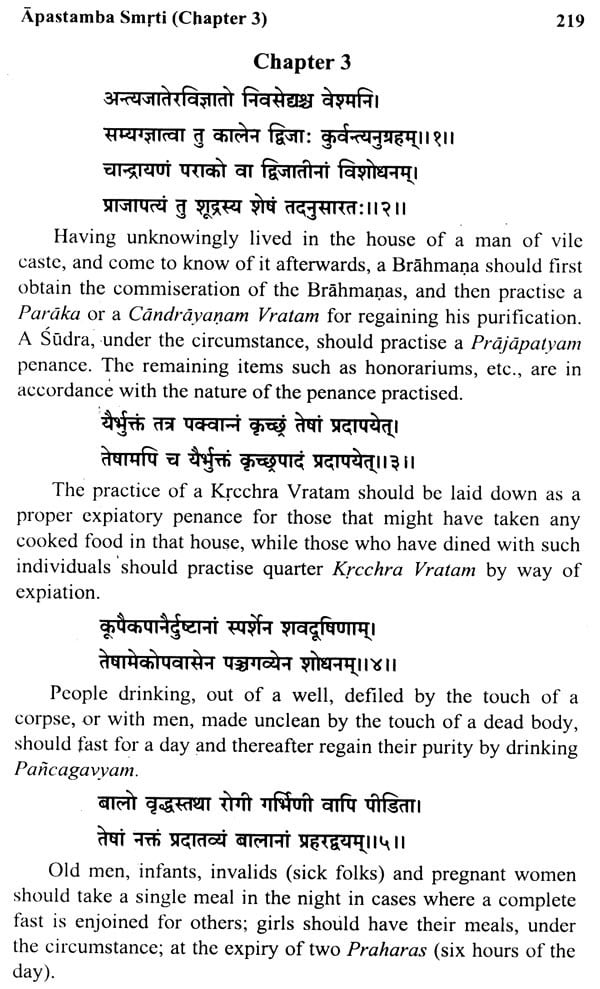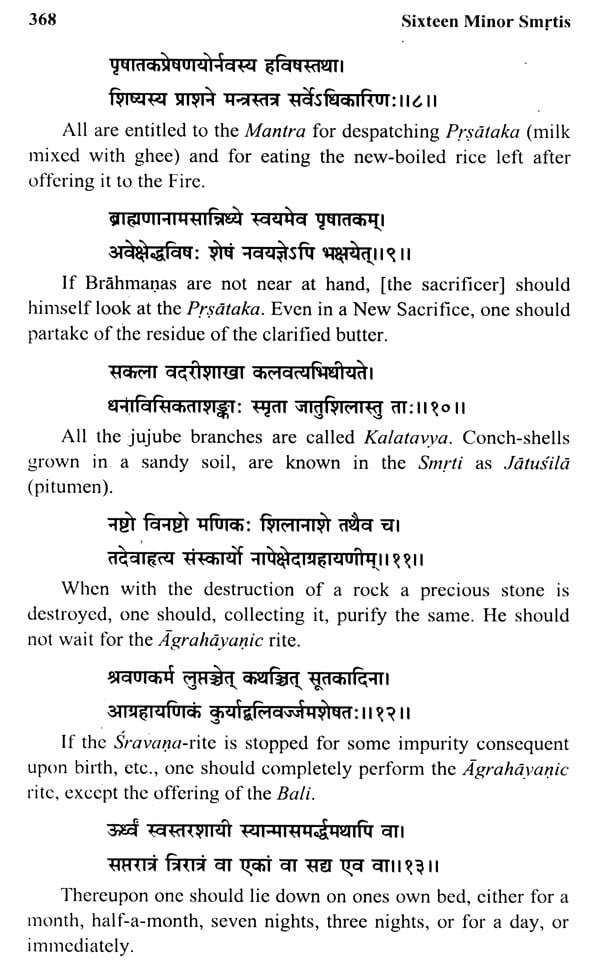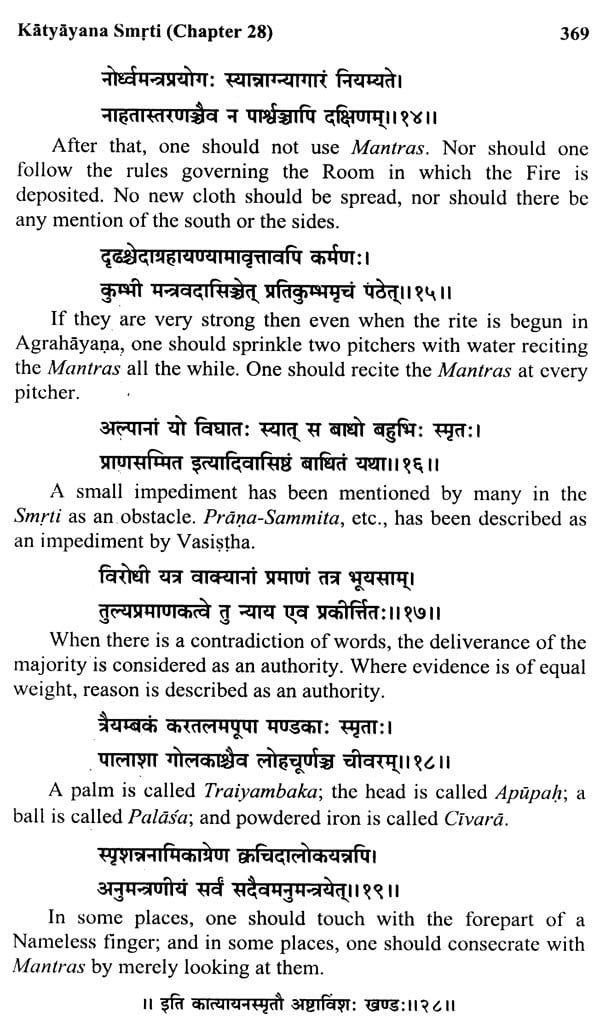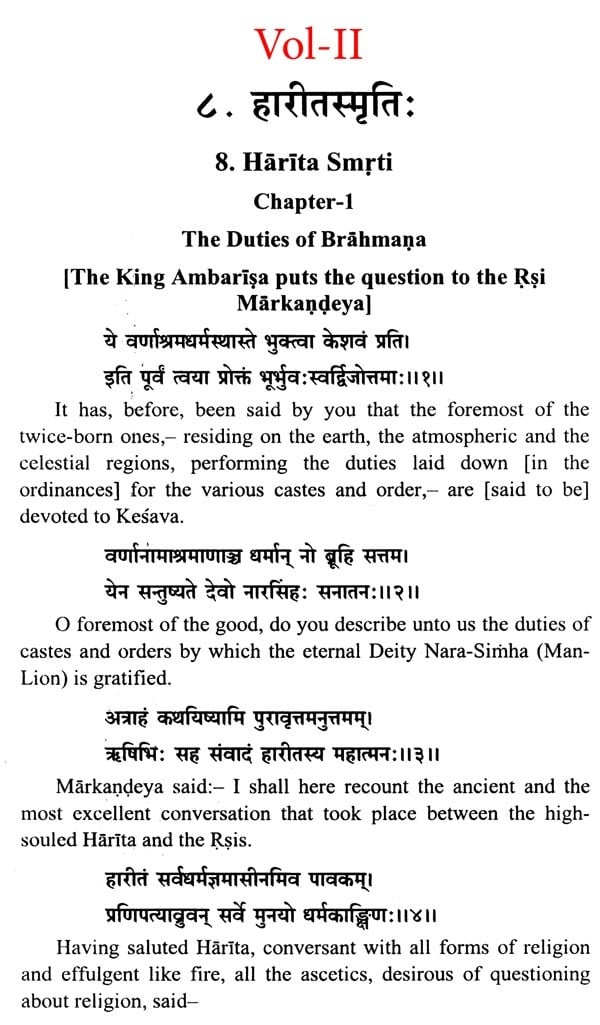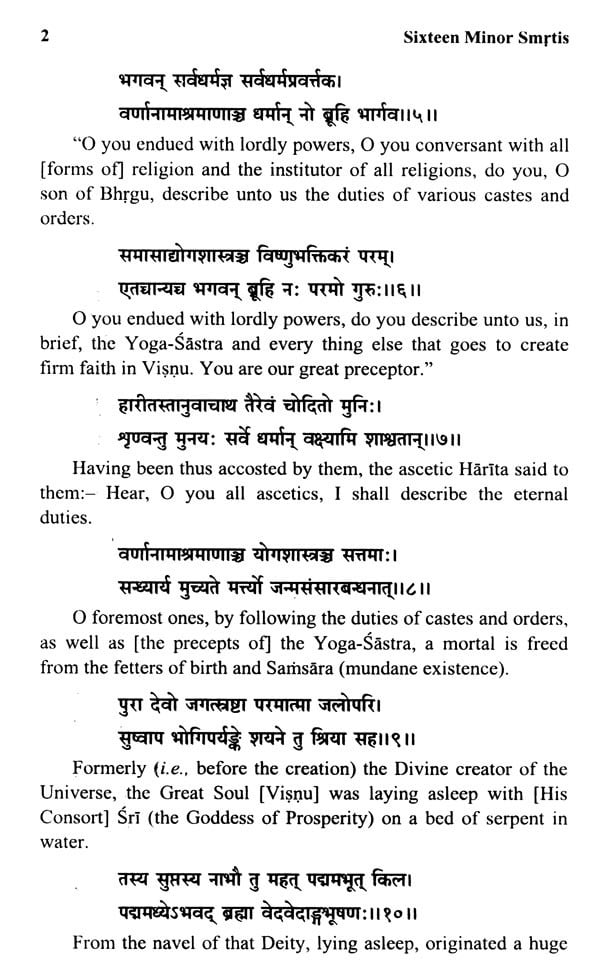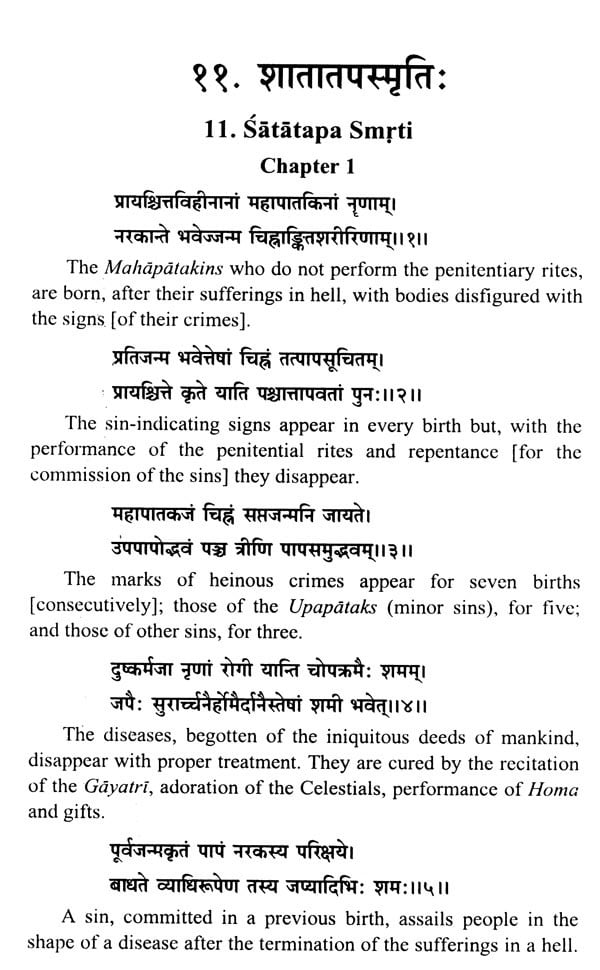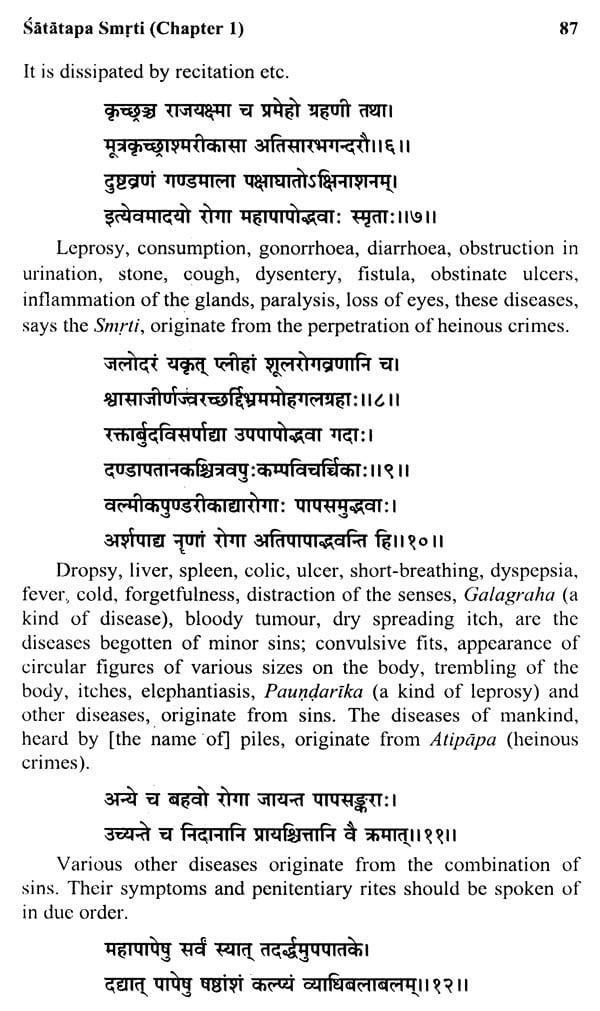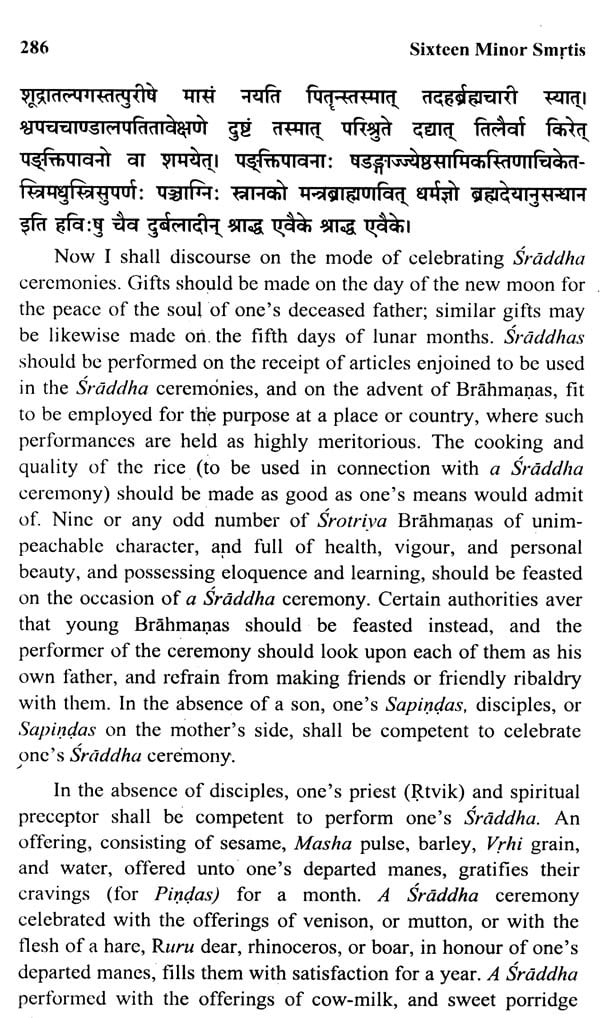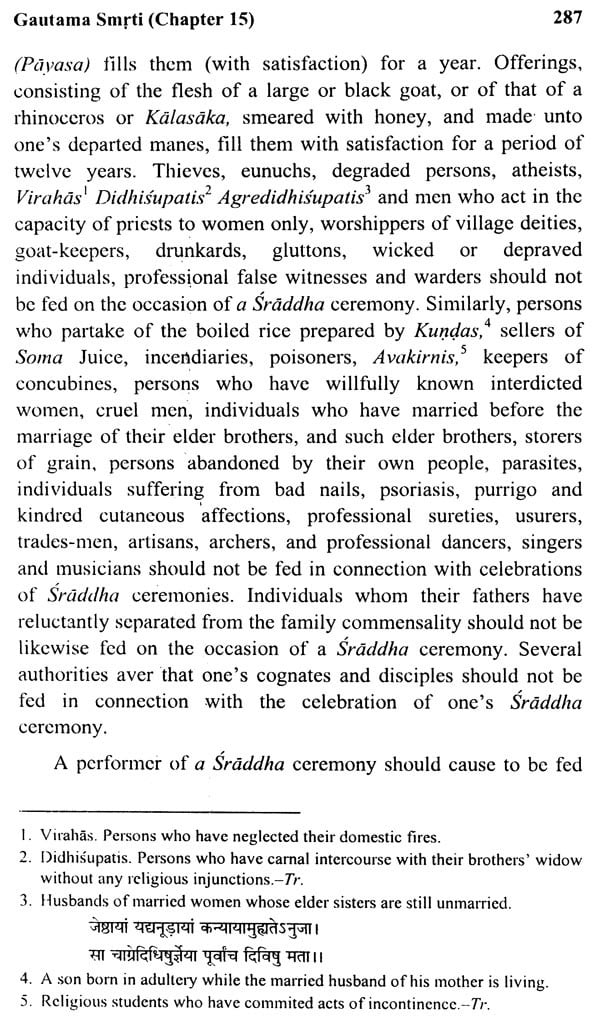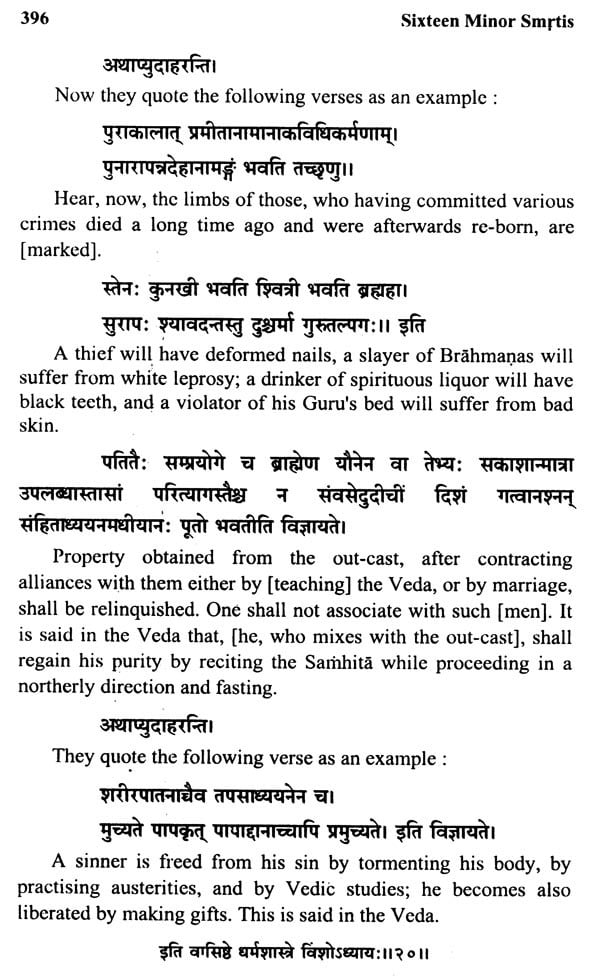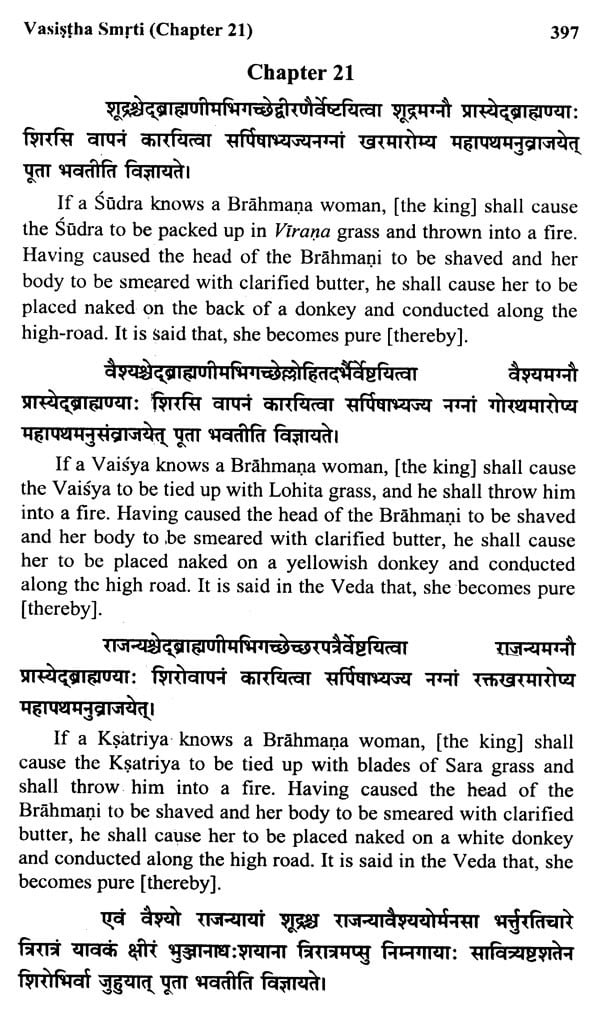Introduction The Scriptural writings of the Hindus are divided, in main, into two classes, namely Sruti or what is heard and Smrti or what is remembered. The earliest and the most sacred religious work of the Hindus, namely, the Veda, belongs to the former. In it the words of revelation are preserved in their original state. And all the laws, civil and religious; which govern and regulate the life and conduct of the Hindus pass under the sacred appellation of Sruti. According to the belief of the Hindus, Smrti also is of divine origin; the difference between it and the Veda consists in the fact that in the Hindu System of Law the sense is recorded either in the divine words or other equivalent expressions. The history of the origin of Smrti attributes it to the Self-Sprung Brahma who communicated it to Manu, who again taught it to the ten patriarchal sages, viz., Marici, Atri, Angira, Pulastya, Pulaha Kratu, Praceta, Vasistha, Bhrgu and Narada.
Smrti consists of three KaI.1Qas or sections, viz.,- (1) A-cara or regulations relating to the performance of religious rites and ceremonies and the general duties of men; (2) Vyavahara or civil laws relating to the protection of life and property with all their rules and practices; (3) Prayascitta or those relating to the atonement for various sins committed. But all these groups of laws, religious', civil and about atonement, pass by one comprehensive term which is popularly known as the Dharma-Sastra.
The Dharma-Sastra of the Hindus, is not one single book but consists of the Samhitas or Institutes of holy sages numbering twenty according to the list given by Yajnavalkya, namely,- Manu, Atri Visnu, Harita, Yajnavalkya, Usana, Angira, Yama, Apastamba Samvarta, Katyayana, Brhaspati, Parasara, Vyasa, Sankha, Likhita, Daksa, Gautama, Satatapa and Vasistha.
There are slight variations in the names of authors to be found in the writings of the other Lawgivers. In some works more names are seen. Parasara, whose name occurs in the above list, mentions also twenty Lawgivers; but in his enumeration, instead of Yama, Brhaspati and Vyasa the names of Kasyapa, Gargya and Praceta are mentioned. In the account given of the Samhitas in that encyclopaedic work Padma Puranam the name of Atri, which is seen in Yajnavalkya's list, is omitted and the number of thirty-six is completed by adding Marici, Pulastya, Praceta, Bhrgu, Narada, Kasyapa, Visvamitra, Devala, Rsyasrnga, Gargya, Baudhayana, Paithinasi, Jabali, Samantu, Paraskara, Lokaksi, Kuthumi.
In the commentary of the Grhya-Sutra by Ramakrsna thirty-nine names are mentioned, of whom nine are not to be found in any of the above lists, viz., Agni, Cyavana, Chagaleya, Jatukarana, Pitamaha, Prajapati, Buddha, Satyayana and Soma. Sometimes one person is mentioned as being the author of several Institutes, Comprehensive (Brhat), and Easy (Laghu), according to the nature and bulk of the work.
Besides those mentioned above, some more legislators appear to have flourished, namely,- Dhaumya, the priest of the Pandavas and the author of a Commentary on the Yajurveda, Asvalayana, who wrote several treatises on religious acts and ceremonies, Bhaguri, a commentator of Manu-Smrti and Datta, the son of Atri.
According to the Hindus the world is divided into four Yugas or cycles, and each Samhita (Smrti) is considered appropriate for each cycle. Parasara regards Manu-Smrti as suited to Satya- Yuga, that of Gautama, to the Treta, those of Sankha and Likhita to the Dvapara and his own Institutes to the Kali Yuga. But this distinction has never been actually observed. Truly does Strange remark:- "In fact had Parasara-Smrti alone been adopted as the Dharma-Sastra of the present age it would not have been sufficient for the purpose; inasmuch as the Vyavahara-Kanda is entirely wanting in his Institutes; so that a professed commentary on this Smrti, is founded, in this respect, upon nothing belonging exclusively to Parasara, beyond a verse extracted from the Acara, or the first Kanda, purporting merely that the princes of the earth are, in this age, enjoined to conform to the dictates of Justice." - Preface to Stranges ' Hindu Law.
Of all the Smrtis, Manu-Smrti is regarded by the Hindus as next in sanctity to the Vedas. It is the oldest of all the laws and its authorship is attributed to Manu himself, the son of Brahma. He was the most ancient and the greatest of all Lawgivers.
Subsequent writers, of Hindu Law Codes, considered Manu as their authority and wrote their books after the same model. The laws of Manu were held in such great veneration by the saintly writers of law-treatises that no part of their books contradicting Manu, was regarded as an authority on the subject. Brhaspati writes in his Code: "Manu held the first rank among the legislators, because he had expressed in his Smrti, the essence of the Vedas, that no code contradicting Manu, was considered as an authority; that other Sastras and treatises on grammar or logic so long only shone as Manu, who taught the way to religion, profit and desire, was not seen in competition with them. "
Babu Syama Carana gives, in his learned work, the following concise account of the other Smrtis.
"Atri composed a remarkable law-treatise, in verse, which is extant.
"Visnu is the author of an excellent law-treatise, which is for the most part in verse. Hartta wrote a treatise in prose. Metrical abridgements of both these works are also extant.
Yajnavalkya appears, from the Introduction to his own Institutes, to have delivered his precepts to an audience of ancient philosophers assembled in the province of Mithila. The Institutes of Yajfiavalkya are second in importance to Manu and have been arranged in three books : viz., Acara, Vyavahara and Prayascitta Kandas containing one thousand and twenty-three couplets.
"Usanas composed his Institutes in verse, and there is an abridgement of the same.
"Angira wrote a short treatise containing about seventy couplets. "Yama or Jama, composed a short tract containing a hundred couplets.
"Apastamba was the author of a law tract in prose which is extant as well as an abridgement of it in verse.
"The metrical abridgement only of the Institutes of Samvarta is found in this country.
"Katyayana is the author of a clear and full treatise on law and also wrote on grammar and other subjects.
“An abridgement of the Institutes, if not the Code at large, of Brhaspati, is extant.
"The treatise of Parasara, which consists of the Acara and Prayascitta Kandas, is extant.
"Vyasa is the reputed author of the Puranas : he is also the author of some works more immediately connected with the law.
"Sankha and Likhita are the joint authors of a work in prose, which has been abridged in verse : their separate tracts in verse are also extant.
"Daksa composed a law-treaties in verse.
"Gautama is the author of an elegant treatise, although Texts are cited in the name of his father Gotama, the son of Utathya.
"Satatapa is the author of a treatise on penance and expiation, of which an abridgement, in verse, is extant.
"Vasistha is the last of twenty legislators named by Yajnavalkya; his elegant work in prose is intermixed with verse.
"Besides the Smrtis above mentioned, there is extant a part of Narada's Smrti; and some Texts of other sages, except Kuthumi, Buddha, Satayana and a few more (whose Vacanas and names rarely occur in any compilation) are seen cited in the Digests and Commentaries.
Book's Contents and Sample Pages
